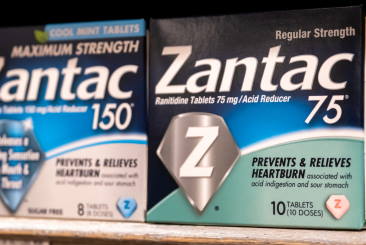Many plaintiff attorney firms today that specialize in group personal injury cases often take cases on a contingency basis. Many of these cases will eventually become mass tort lawsuits where they may settle for eye-catching sums. But what are contingency cases? What are mass tort lawsuits? As an average individual in this environment, these jargon terms can quickly muddy the waters and prevent clear communication between a prospective client and their firm.
First please be aware that class action lawsuits are a different type of suit then mass tort lawsuits. Mass tort lawsuits are a subtype of civil lawsuit where many distinct, individual plaintiffs file against a number of defendants. Mass tort lawsuits are distinct from class-action lawsuits in that a mass tort lawsuit treats each individual plaintiff as a separate plaintiff as opposed to class action lawsuits that treat a member of a larger lawsuit.
This mostly has to do with the severity of injuries. In class action lawsuits all claims are identical this difference allows for the formation of a single case. In a mass tort, the claims have different degrees of severity, but they all involve the same cause, circumstances, or product.
This means that in mass tort suits plaintiffs will still need to prove their individual accusations against the defendant. The advantage that mass tort lawsuits present is that the defendant may offer a global settlement to the entire mass tort group which the members may opt-in or out of.
One of the most common reasons that a firm may choose to take on contingency cases is to file mass tort lawsuits. When a law firm accepts contingency cases they agree to work on a contingency basis. Working on contingency means that the plaintiff will not pay for any legal fees until the case is either settled or won. At that time, the law firm will usually take a percentage of the compensation recovered. This means that if the plaintiff does not win their case, the law firm does not collect any fees for their services. Many law firms may work on contingency if it seems like the plaintiff cannot afford legal support but has a solid or provable case.
In addition to not charging any up-front costs, law firms taking contingency cases will also absorb any incidental fees that arise during the course of the case. Some of the expenses that could be raised include: hiring expert witnesses, case filing costs, witness deposition costs, file postage fees, and costs to view medical and legal records. These fees can rapidly pile up and in a case against a major corporation, these fees could be exacerbated by fighting appeals or opposing motions.
Despite the risks, contingency cases can benefit both the plaintiff and their law firm. For a law firm, a single mass tort settlement can allow them to recoup any losses during the life of the case without expensing the client. On the plaintiff’s side, the lack of up-front costs and management of incidental fees means that pursuing justice for their injuries will not be held out of reach by financial demands.
- First, the lawsuit will be filed with the court. Following the filing and assuming the defendants don’t immediately settle, the process of discovery begins. As the name implies, the Discovery phase is a period during which both plaintiffs and defendants discover what information the other has in order to build this case.
- During discovery, experts will give depositions, medical records will be examined, witnesses will give testimony, and in general, all the facts of the case will be assembled. Once the facts have been determined, pre-trial motions begin.
- Pre-trial motions may ask for summary judgment, dismissing the case for some error in a jurisdiction or filing practice, or it may determine which facts in the case are disputed. Pre-trial motions can set the stage to determine how well a lawsuit will go for each side. If, for example, the defendants’ expert witnesses are dismissed by a pre-trial motion, they may reconsider proceeding.
- Following pretrial motions, assuming there is not a settlement or arbitration between the sides, a trial date is set and the case is brought before a jury. This trial will continue until both sides have made their case to the jury and a verdict has been reached. It is important to note that in a civil suit, like a hernia mesh lawsuit, the burden of proof is not “beyond a reasonable doubt,” but “by a preponderance of the evidence.”
While there is no formal definition for how sure a jury must be, “by a preponderance of the evidence” is a far lower standard than “beyond a reasonable doubt” and could reasonably be interpreted as being more likely that the defendant caused the damages than not.
In a mass tort lawsuit, like almost every type of civil suit, damages will likely be assessed to a monetary amount. This amount will likely feature a compensatory fine and potentially a punitive fine if the trier of fact believes that the defendants acted in bad faith. The compensatory fine will consist of past, present, and expected future expenses that the plaintiff has and will incur, and will be payable at the conclusion of the case. Punitive fines are more discretionary and can be as small or large as the trier of fact believes is appropriate up to a certain legal limit.
Recently Mass tort cases against the makers of Roundup (Bayer) and the Johnson and Johnson Talcum Powder Case settled for large numbers that were unexpected by many yet are well deserved for the people that were harmed by this product.
- On June 24, 2020 the Missouri Court of Appeals upheld a $2.1 billion verdict against Johnson & Johnson, finding the company knew there was asbestos in their baby powder.
- In June 2020 Bayer (the manufacturer of Roundup Weedkiller) agreed to pay up to 10.9 billion dollars to settle almost 100,00 lawsuits claiming the product causes cancer.

Medical Malpractice
Dangerous & Defective Products
Personal Injury Lawsuits
DUI Lawyer Support
Employer Negligence
Mass Tort Lawsuits
Top Class Action Lawsuits
Expertise
Reviews
FAQ









